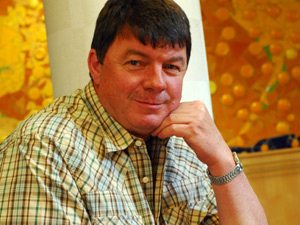
[miningmx.com] – HARMONY Gold said it hoped to break-even at a gold price as low as $1,100 per ounce by the end of its financial year (end-June), adding that it still had to rein-in costs at Kusasalethu, Tshepong and Phakisa mines.
Commenting on its December quarter figures, which also signals the company’s half-year, CEO Graham Briggs sounded a bullish note saying the firm was “sustainable” and was even “thriving” at a gold price of between $1,200 to $1,250/oz.
This was despite absorbing a 7.5% to 8.5% wage increase from June as well as paying for its capital, overheads and exploration costs out of profit.
Speaking later at the company’s December quarter presentation, Briggs added that it was still Harmony Gold’s ambition to pay a dividend. “It’s a strong objective of ours to pay dividends by the year-end (June 30),” Briggs said. The company passed on the interim dividend this year as no in-roads had been made into net debt.
“We are confident that we can continue to manage our operations so as to remain profitable even should the gold price come under further pressure,” said Briggs. Five of Harmony Gold’s mines were profitable at below $1,000/oz.
Analysts have suggested that Harmony, along with other South African gold producers, may have to consider restructuring in order to trim costs further.
“We believe that the initial savings have come from cost components which are relatively easy targets such as reducing capital costs,’ said David Davis, an analyst for Standard Bank Group Securities.
The next series of cost savings would come in more ominous form of “further right-sizing or operations and a reduction in production,’ he said, identifying Harmony Gold’s Kusasalethu as a possible candidate, among others.
Briggs acknowledged the mine was under pressure. “Everyone knows the time frames, and we are not going to say now as there are too many journalists in the room and they will write a story about it,” he said at the results presentation.
Briggs said his team had introduced management and technical changes to increase production and lower unit costs at Kusasalethu and Tshepong where 10% of labour was cut. There had also been management changes at Doornkop while restructuring was due at Phakisa and Masimong.
“We’ve still got a little bit more restructuring to do,” said Briggs. “The easiest cost-cutting has happened; the more difficult is yet to come.”
Briggs’ comments come on the back of a R91m net loss for the December quarter (Sep: R13m profit) partly owing to a foreign exchange translation loss on a dollar loan to finance exploration at its Wafi-Golpu deposit in Papua New Guinea.
The company also booked gold stock adjustments as a result of more gold sold than produced during the December 2013 quarter, it said.
However, there was a R35m increase in net cash and near-cash equivalents which stood at R2.32bn as of December 31. The market didn’t like the performance, however. The stock was down about 9% in early morning trade on the Johannesburg Stock Exchange.
WAFI GOLPU
Harmony Gold said it would take an investment decision on its Wafi-Golpu project in Papua New Guinea during the second half of the 2014 calendar year.
The project, held in joint venture with Newcrest, was a victim of the 20% decline in the gold price when, in August, it was decided to reduce by R1bn Wafi-Golpu’s R5.1bn development bill for the company’s 2014 financial year. The Papua New Guinea project is estimated to contain 38.9 million ounces of gold and gold equivalents.
An agreement for a framework for the underground exploration phase, ongoing technical and economic studies and, ultimately, the future development and operation of the project would also be taken this year, it said.
Said Briggs: “There is still no value being given to the prospect, but we are making some excellent progress. It’s just a fantastic orebody, and I’m more excited about this than have been for a long time.’
There was no capital budget set aside for Wafi-Golpu beyond the 2016 financial year, a situation Briggs said was linked to the modular basis on which the mine was now being planned.











